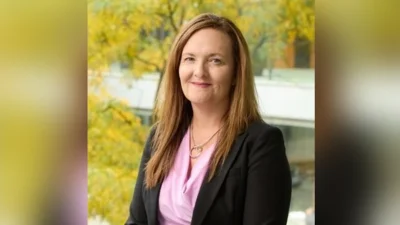University of Virginia issued the following announcement on Dec. 16
In the 2015 Paris Agreement, nations around the world pledged to limit future global warming to well below 2.0 degrees Celsius, preferably to 1.5 degrees Celsius, only a few tenths of a degree higher than where Earth’s temperature stands now. While the primary action for countries to take is emissions abatement, or the reduction of carbon dioxide release by switching to renewable fuels, energy-efficient power sources and novel approaches to steel and cement production, scientists have made it clear that abatement is not enough. In order to curb the effects of heat-trapping gases, the world needs to innovate technologies and interventions which speed up carbon dioxide removal from the atmosphere.
Scientists and engineers are exploring potential solutions to do this, and in a new report from a National Academy of Sciences panel, chaired by University of Virginia environmental science professor Scott Doney, the focus is on the ocean, not the atmosphere.
For more than 20 years, Doney has researched human CO2 emissions and has worked to quantify how much of the greenhouse gas is taken up by the Earth’s ocean. With a background in oceanography and biogeochemistry, Doney said the alkalinity and natural processes of the ocean already allow it to remove a quarter of human carbon dioxide emissions, making it a potentially desirable destination for CO2-removing interventions.
Tasked with identifying six potential solutions for further research, panelists reflected a diverse set of geographies and disciplinary perspectives, including individuals from across the U.S., United Kingdom, Germany and Canada. From proposals to electrically jolt the oceans to make them less acidic, to spurring photosynthesis through the addition of nutrients, to farming seaweed for greater CO2 consumption, the research study aims to inform leaders and the public from around the world to make educated decisions in the future.
To better understand how the six recommendations were made, UVA Today checked in with Doney, Kington Professor in Environmental Change, about the risks, costs and next steps to diving deeper into each solution’s potential.
Q. Why are scientists targeting the ocean for carbon reduction?
A. The ocean is a really good sink for CO2 because it has a relatively high alkalinity, which comes from the weathering of rocks on land. The ocean is a lot better at taking up CO2 than fresh water.
You can increase seawater alkalinity by grinding up rocks and adding them to the ocean, or there are electrochemical approaches. We also know that biological processes in the ocean, things like photosynthesis by phytoplankton on the surface ocean, remove carbon and transport it to the deep ocean. So, in its natural state, the ocean holds a lot of carbon and … if you could enhance this biological pump in the right way, you could potentially increase the storage of carbon in the deep sea.
Q. To what extent have climate change-combatting technologies been researched so far?
A. Some approaches have been primarily researched in the laboratory or on computer simulations using theoretical models, and haven’t seen a lot of field-scale experiments yet. Other approaches, such as iron fertilization, have been explored in some detail, but primarily for looking at the basic science of how the ocean functions.
Q. What aspects are taken into consideration when determining the risk level of different interventions?
A. There are a number of different environmental risks, but also social risks. The overarching one is that we don’t want this research to detract from efforts to decarbonize the economy. Emissions abatement – reducing our CO2 emissions – is very high priority.
In terms of environmental risks, the first question is ‘Does it actually work?,’ and the second is ‘Does it work at scale in removing CO2 and storing it for long periods of time?’ That can be challenging, because unlike on land, the ocean is a turbulent moving fluid, so if you remove carbon in one part of the ocean, it might quickly get released somewhere else. Or the activity you do in one spot might change things downstream; for example, if you use up all the nutrients in one part of the ocean, that means there might be less photosynthesis, less phytoplankton blooms somewhere else. You have to be very careful at thinking about it on a large scale.
Original source can be found here.


 Alerts Sign-up
Alerts Sign-up